Toxicity of lunar dust assessed in inhalation-exposed rats
- PMID: 24102467
- PMCID: PMC4666512
- DOI: 10.3109/08958378.2013.833660
Toxicity of lunar dust assessed in inhalation-exposed rats
Abstract
Humans will again set foot on the moon. The moon is covered by a layer of fine dust, which can pose a respiratory hazard. We investigated the pulmonary toxicity of lunar dust in rats exposed to 0, 2.1, 6.8, 20.8 and 60.6 mg/m(3) of respirable-size lunar dust for 4 weeks (6 h/day, 5 days/week); the aerosols in the nose-only exposure chambers were generated from a jet-mill ground preparation of a lunar soil collected during the Apollo 14 mission. After 4 weeks of exposure to air or lunar dust, groups of five rats were euthanized 1 day, 1 week, 4 weeks or 13 weeks after the last exposure for assessment of pulmonary toxicity. Biomarkers of toxicity assessed in bronchoalveolar fluids showed concentration-dependent changes; biomarkers that showed treatment effects were total cell and neutrophil counts, total protein concentrations and cellular enzymes (lactate dehydrogenase, glutamyl transferase and aspartate transaminase). No statistically significant differences in these biomarkers were detected between rats exposed to air and those exposed to the two low concentrations of lunar dust. Dose-dependent histopathology, including inflammation, septal thickening, fibrosis and granulomas, in the lung was observed at the two higher exposure concentrations. No lesions were detected in rats exposed to ≤6.8 mg/m(3). This 4-week exposure study in rats showed that 6.8 mg/m(3) was the highest no-observable-adverse-effect level (NOAEL). These results will be useful for assessing the health risk to humans of exposure to lunar dust, establishing human exposure limits and guiding the design of dust mitigation systems in lunar landers or habitats.
Figures
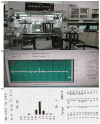
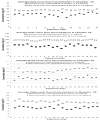
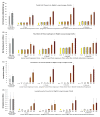
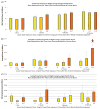
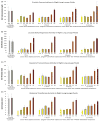

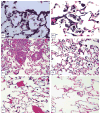

References
-
- Bellmann B, Muhle H, Creutzenberg O, et al. Lung clearance and retention of toner, utilizing a tracer technique, during chronic inhalation exposure in rats. Fundam Appl Toxicol. 1991;17:300–13. Cited in Pauluhn 2012. - PubMed
-
- Bermudez E, Mangum JB, Asgharian B, et al. Long-term pulmonary responses of three laboratory rodent species to subchronic inhalation of pigmentary titanium dioxide particles. Toxicol Sci. 2002;70:86–97. - PubMed
-
- Bilder RB. A legal regime for the mining of helium-3 on the moon: U.S. policy options. Fordham Int Law J. 2009;33:243–98.
-
- Carpenter P, Sibille L, Meeker G, Wilson S. Characterization of standardized lunar regolith simulant materials, NASA Technical Report 20060019180. Washington, DC: National Aeronautics and Space Administration; 2006.
-
- Casella Measure. Belford; United Kingdom: 2013. [Last accessed: Jun 2013]. Available from: http://www.casellameasurement.com/downloadable-content/Handbooks/Microdu....
Publication types
MeSH terms
Substances
Grants and funding
LinkOut - more resources
Full Text Sources
Other Literature Sources
